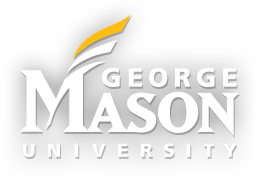A Step-by-Step Guide to Assessment
Planning for assessment- Make it meaningful
- What are the skills and knowledge you expect students of the program to have when they graduate?
- Talk to a wide range of faculty about what students seem to know and where knowledge gaps might be.
- Update the program’s mission statement if necessary. Linking the assessment to the mission statement can help keep the process focused and meaningful.
Creating (or revising) the program’s student learning outcomes
- Ideal learning outcomes indicate who will demonstrate the learning and contain an action verb (avoid “know” and “understand”).
- Consult Bloom’s Revised Taxonomy to decide what level of learning you want to assess.
- Write the learning outcome so that it is measureable, concrete, and fairly simple. Abstract, complex learning outcomes are difficult to measure.
- Undergraduate programs must have at least one written communication outcome.
- Undergraduate programs working closely with OSCAR and Students as Scholars should have at least one research-intensive outcome.
Mapping learning outcomes to courses (Curriculum Map)
- Designate the learning outcomes that are covered in each course.
- Ask for faculty input to ensure that the curriculum map is accurate and faculty know the learning outcomes they should be targeting in their classes.
- Discuss courses that do not address any of the program’s learning outcomes. What is their purpose in the curriculum?
Conducting the assessment- Who, when, and how to measure
- Program-level assessment should be conducted only on students in the degree program. Do not include non-majors or students from other departments in a program-level assessment.
- Designate an achievement target. What percent of students should be able to achieve the learning outcome?
- Consider whether you want to assess achievement at the end of the degree program or whether you would like to show development throughout the program.
- To assess the end of the degree program, focus on the culminating final project of the program: capstone, senior project, Masters thesis, dissertation.
- To assess development, create a rubric that focuses on development of skills and knowledge. Pick artifacts from two classes or experiences and use the same rubric to score each one (a longitudinal approach is ideal, but cross-sectional is acceptable).
- Choose an assignment, paper, project, or exam question that requires the knowledge and skills that are expressed in the learning outcome.
- Most assessment of student learning outcomes is done with rubrics. Ideally, two or more independent faculty raters should use the rubric to score all the artifacts. Any discrepancies between raters should be discussed and resolved.
- Professional certification exam pass rates can be used to measure a student learning outcome, if applicable.
Using assessment data for program improvement- Action plans
- Determine whether the students met the achievement target for each outcome.
- If the achievement target was met, evaluate whether there were any areas of weakness, despite the overall success for that learning outcome.
- If the achievement target was not met, consider why not. What curricular improvements can be made to help students achieve the learning outcome in the future?
- The goal of assessment is to improve student learning, not to “get a good score.” Using assessment data to determine how to improve or change the curriculum is an essential part of the assessment process.
Additional Resources
Levels of Assessment: From the Student to the Institution (AAC&U publication)
Student Learning Outcomes Assessment Feedback Guide for Academic Programs
